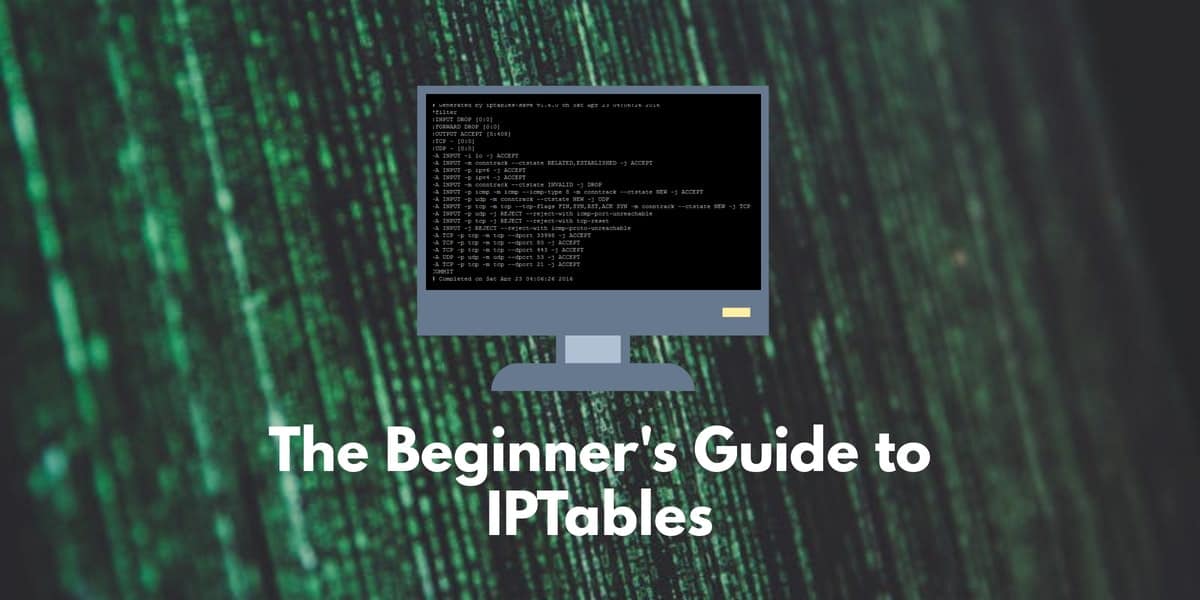As Linux users, we are used to having a great deal of control over our system and its security. One of the most important tools we have at our disposal is iptables, a powerful firewall program for Linux. With iptables, we can control how our computer interacts with the outside world by creating rules to filter incoming and outgoing data packets.
Iptables work by using tables that contain sets of rules called chains. Each chain is an ordered list of rules that will be applied when a packet is received or sent out. The tables themselves are divided into different categories such as INPUT (for incoming packets), OUTPUT (for outgoing packets), FORWARD (for packet forwarding), and NAT (for network address translation). We can also create custom chains to apply specific rules to certain types of traffic.
To get started with iptables, it is important to understand the syntax and how it works. There are several options available when creating a rule: -A for appending a rule, -D for deleting one, -I for inserting one at a specific position in the chain, -R for replacing an existing rule with a new one, and -S for listing all current rules in a specified table or chain.
It’s also important to understand how these rules interact with each other; the order in which they are executed can make all the difference when it comes to security. For example, if you have two rules that both allow access from a certain IP address but one has a higher priority than the other, only the rule with a higher priority will be applied.
Once you have created your chains and added your desired rules, you can list them by running the command `iptables -L -v -n | more`. This will list all currently active iptables rules by specification so you can see exactly what’s going on behind the scenes in your system’s firewall configuration.
iptables is an essential tool for Linux users who want to keep their systems secure from malicious attacks or unauthorized access attempts. With this powerful program at our disposal, we can create finely-tuned firewalls tailored specifically to our needs and ensure that our systems remain safe from harm.

The Use of IP Tables
IP tables are used to create a set of rules or chains, that will filter incoming and outgoing data packets on your Linux server. This is done in order to secure the server from malicious attacks such as Denial of Service (DoS) attacks, port scans, and other forms of network intrusion. It is also used to limit access to certain ports, services, or applications on your server. With IPtables, you can define which services or applications are allowed and which ones are blocked. Additionally, you can specify which systems are allowed access to the server and which ones should be denied access.
In short, IP tables provide a powerful means of controlling traffic flow into and out of your Linux server, helping you secure it against malicious attacks while at the same time providing flexibility when it comes to managing access control.
Using IP Tables Commands
The command for IP tables is ‘iptables’. This command is used to configure and manage the Linux kernel’s built-in firewall. It allows you to create rules that specify which packets are allowed or blocked from entering or leaving your system. You can use iptables to set up packet filtering, network address translation (NAT), port forwarding, and other related functions.
Difference Between Firewall and Iptables
The primary difference between iptables and firewalld lies in the way firewall rules are managed. Iptables is a command-line tool for managing firewall rules on a Linux machine. It works by allowing administrators to define rules that are associated with a specific network interface or protocol. The iptables syntax is quite complex and requires a deep understanding of the system in order to use it properly.
Firewalld, on the other hand, is a dynamic daemon that provides an easier-to-use interface for managing firewall rules. Firewalld uses zones that provide a way to group together related network interfaces and protocols into logical groups. This makes it easier to manage firewall rules as they can be applied to an entire zone instead of having to be created for each individual network interface or protocol. Firewalld also has the advantage of being able to apply changes in real time without requiring any restart or reloading of the system configuration.
Conclusion
In conclusion, iptables is an essential tool for managing and protecting a Linux machine. It provides a powerful way to control the incoming and outgoing traffic of a machine, allowing users to set up rules to filter out malicious traffic or unwanted connections. Furthermore, it can be used in conjunction with a firewall for an even more comprehensive level of security. With iptables, users can ensure their system is secure and that their data remains safe from external threats.








